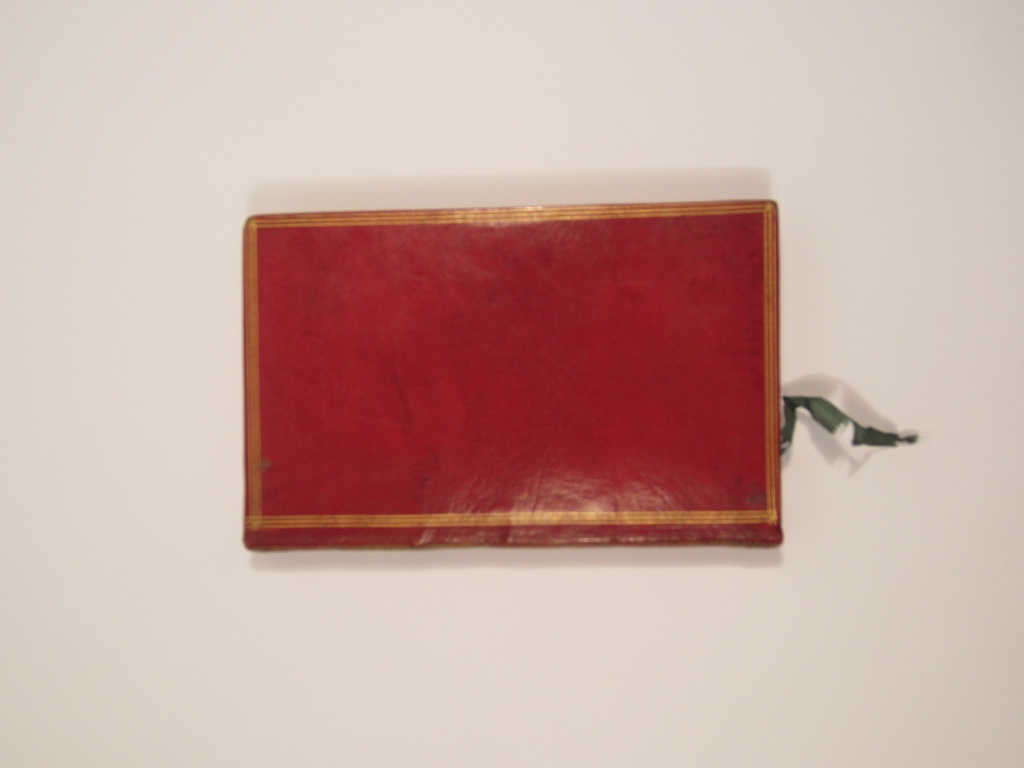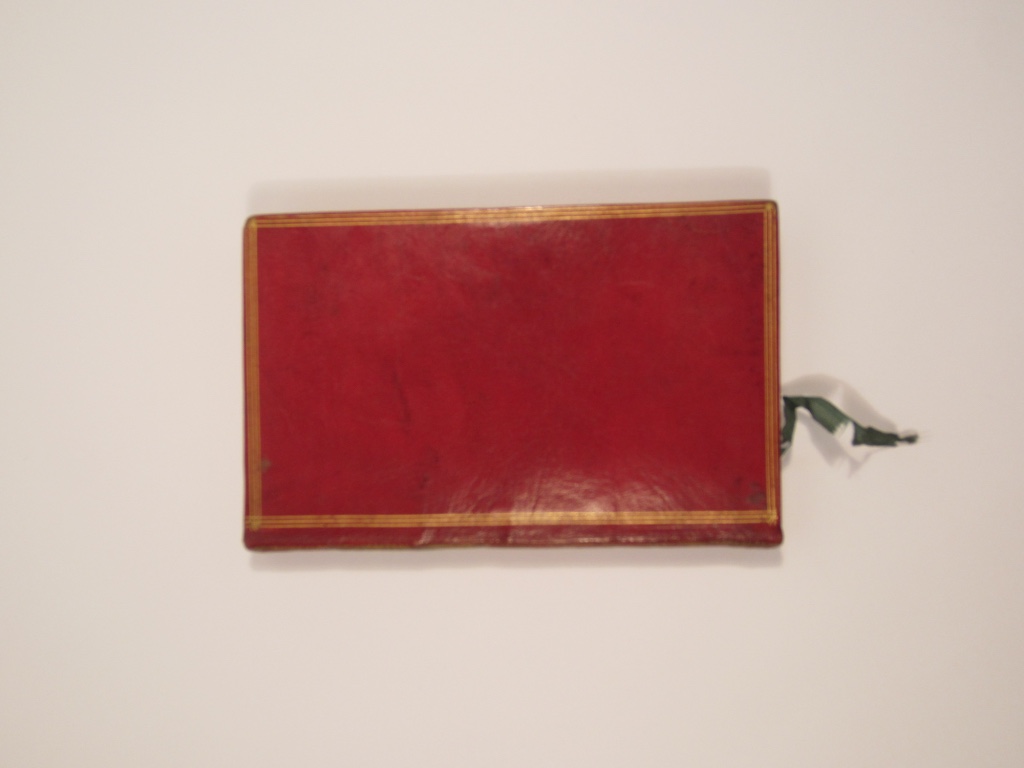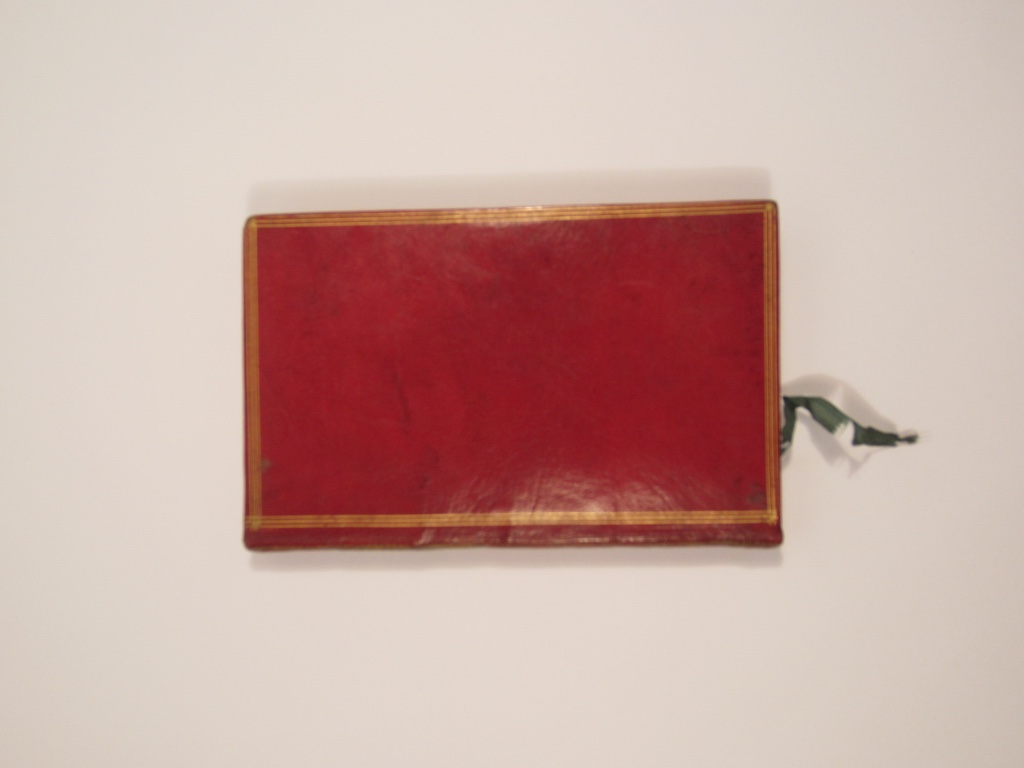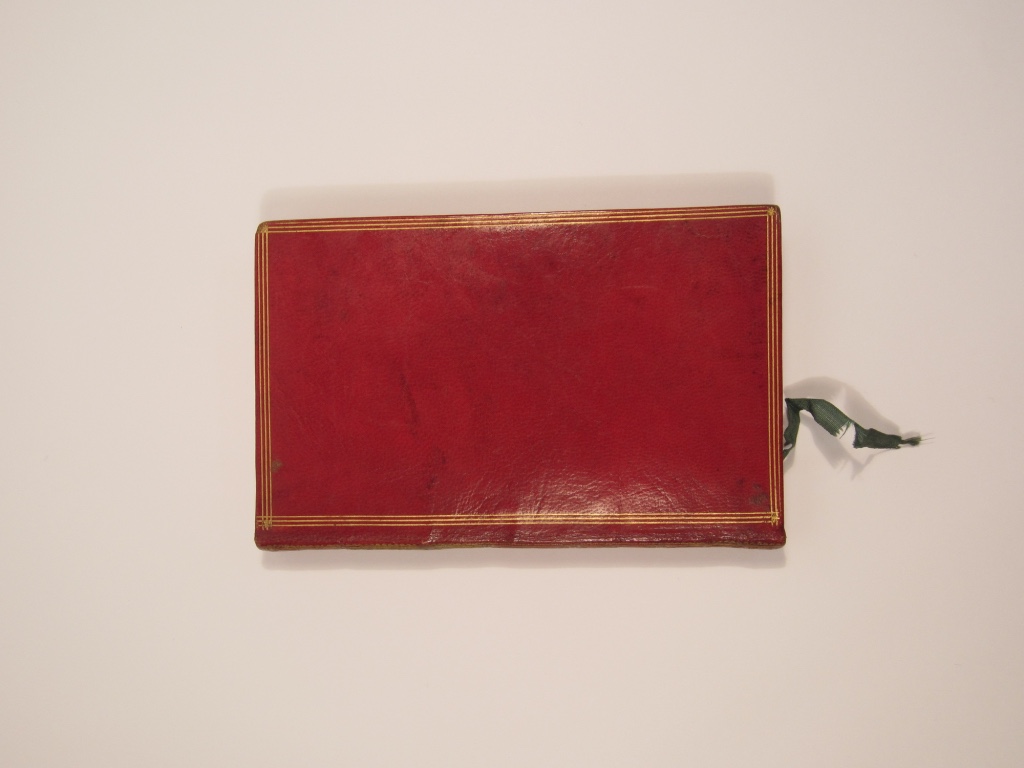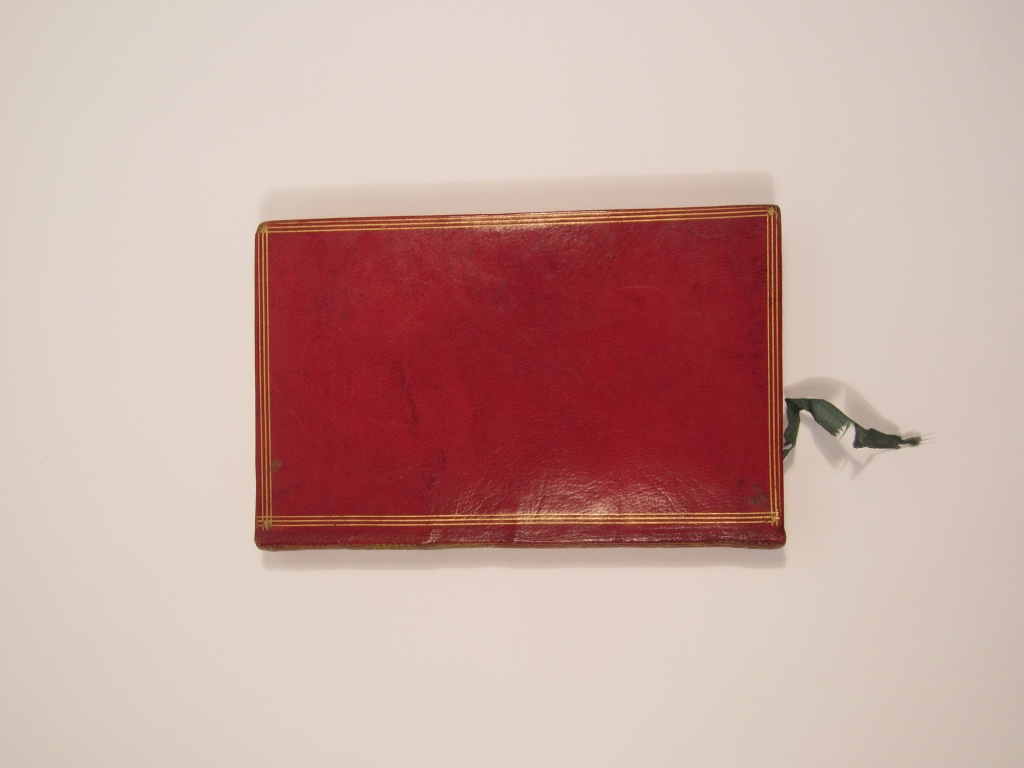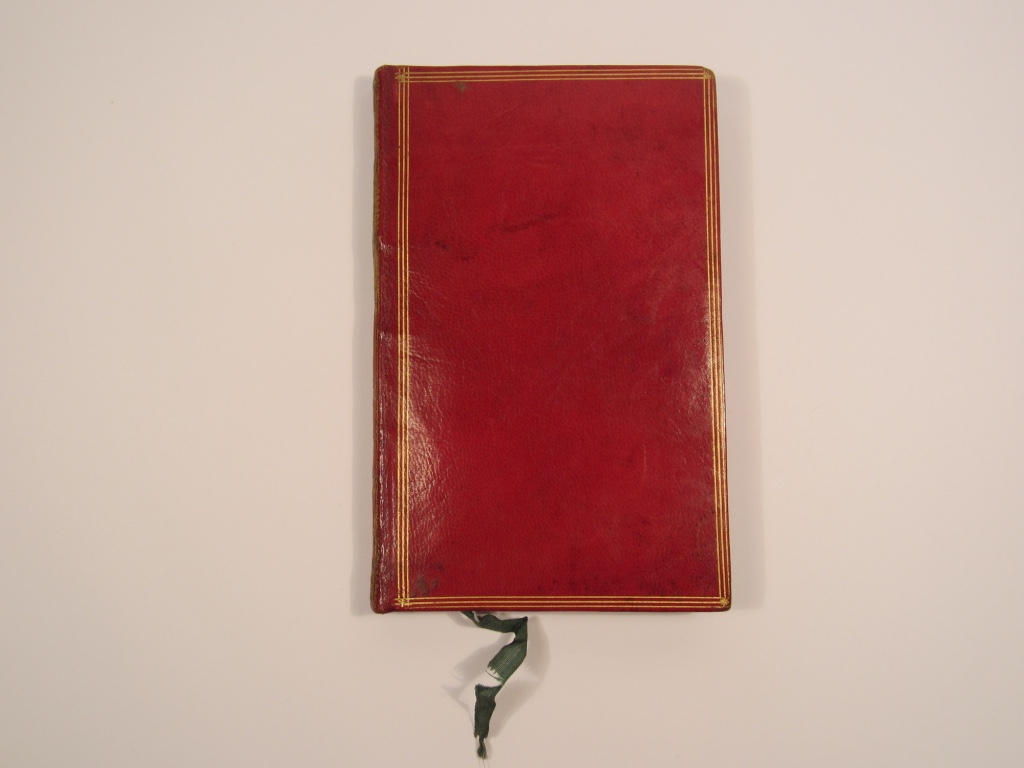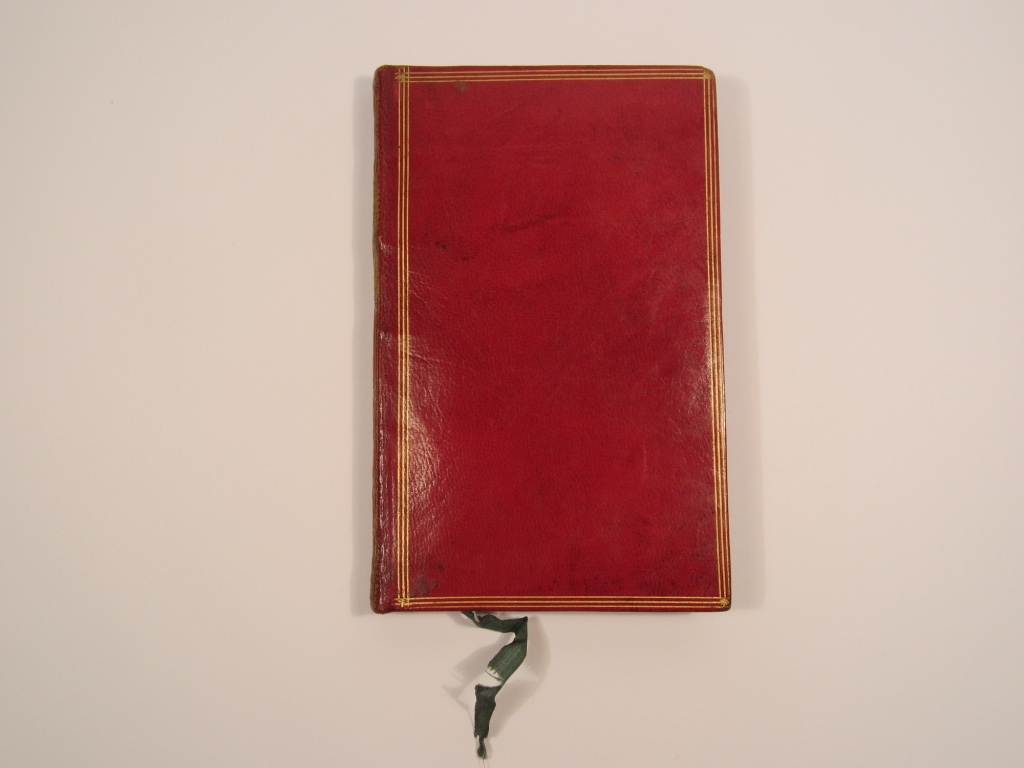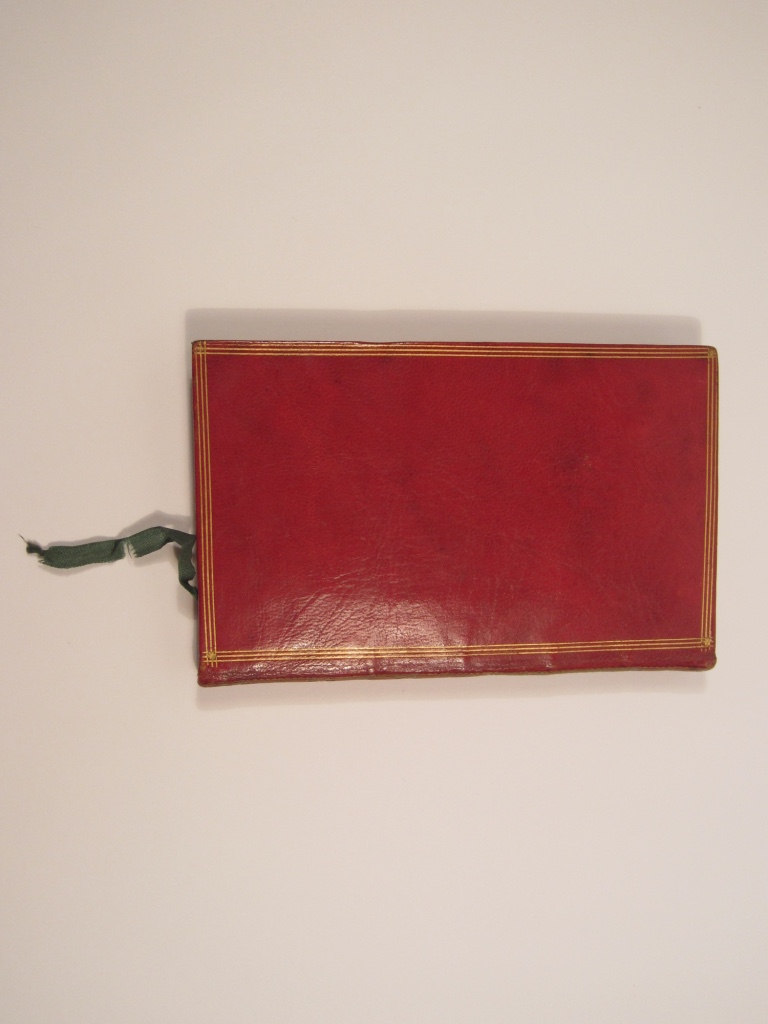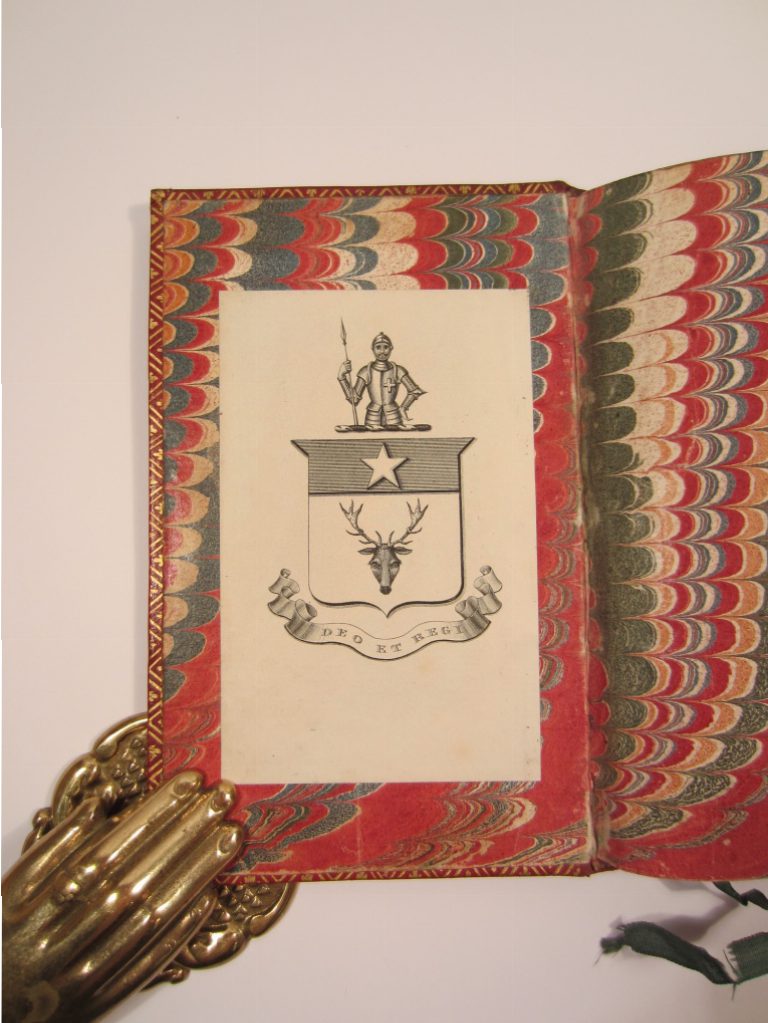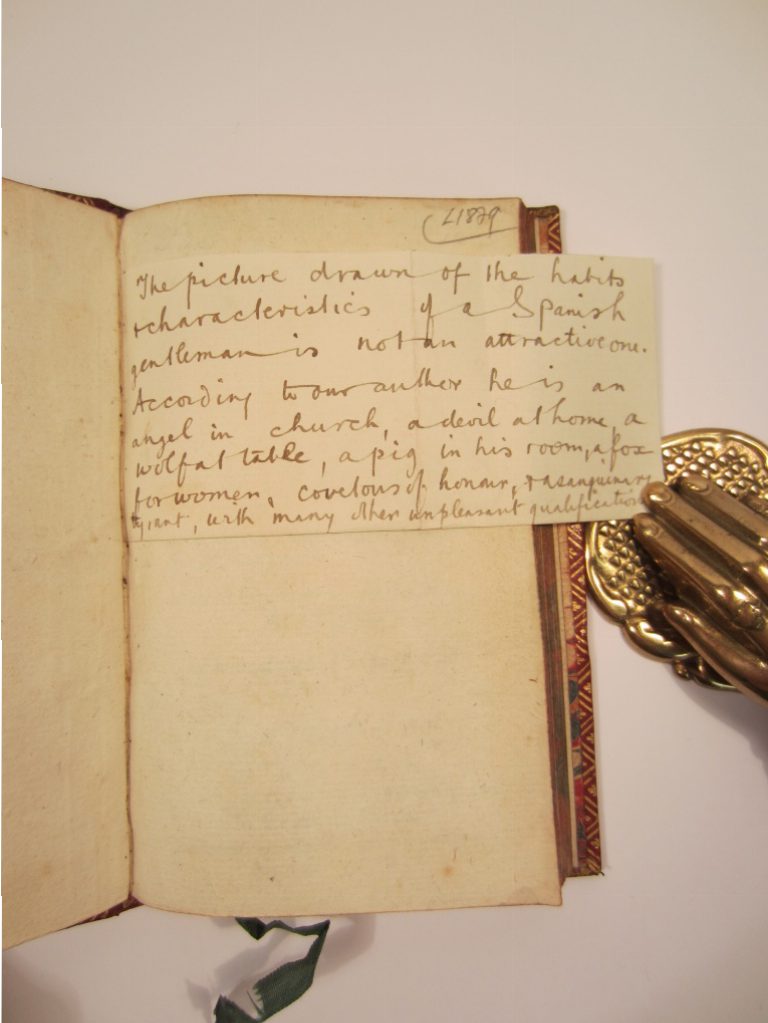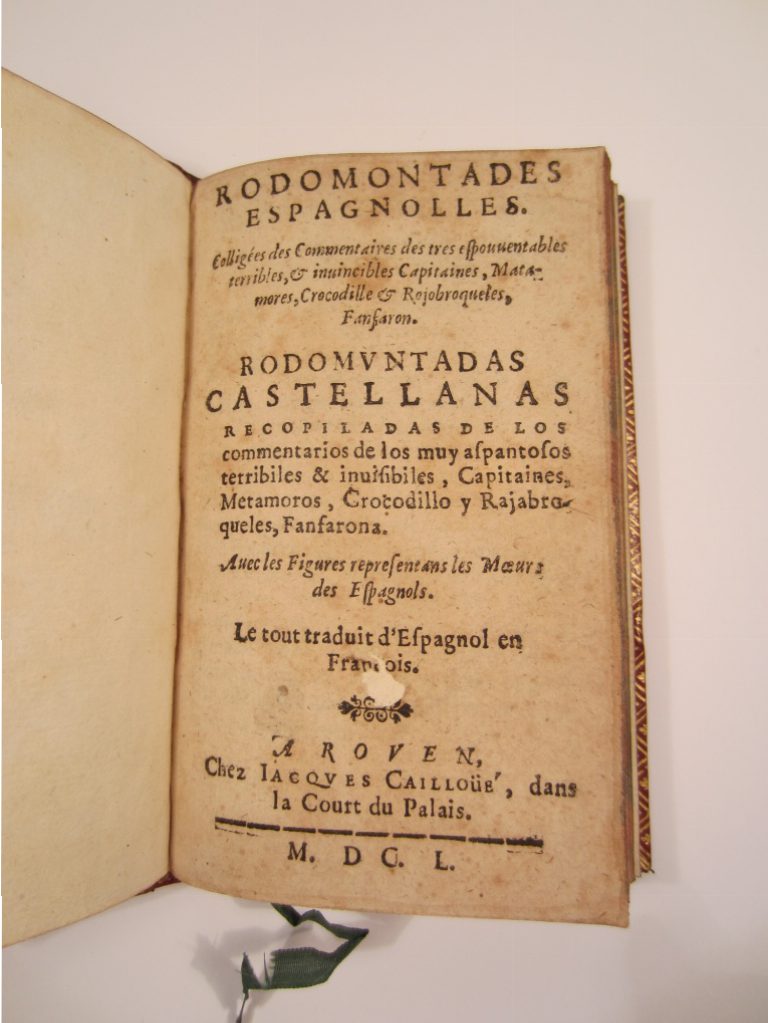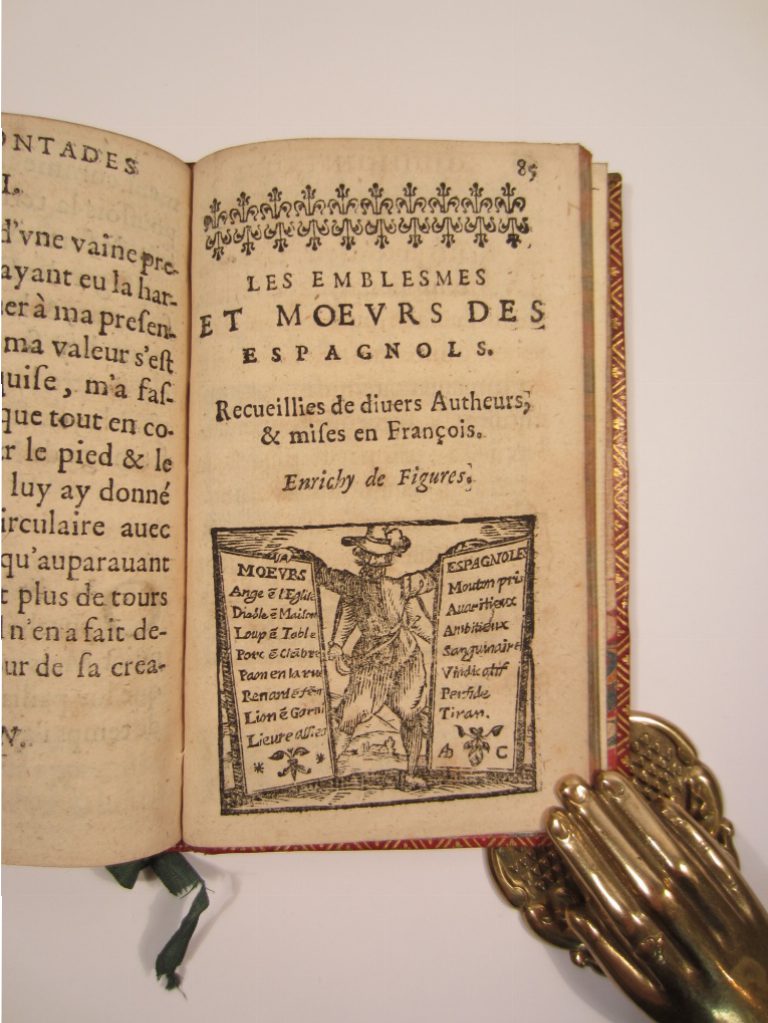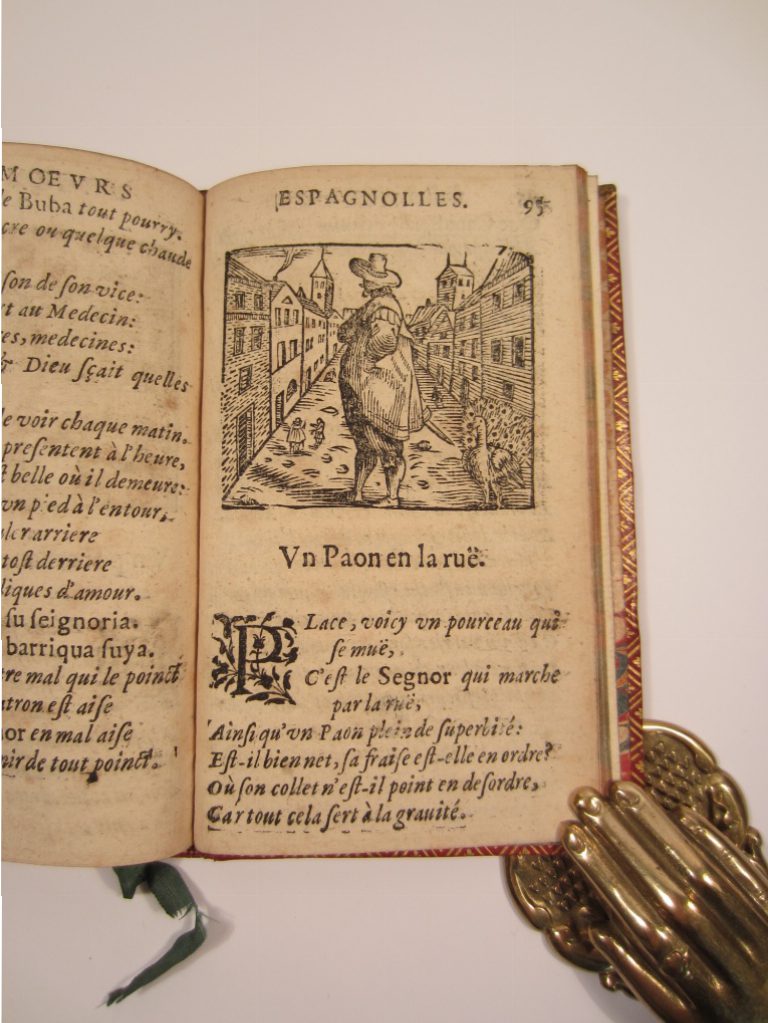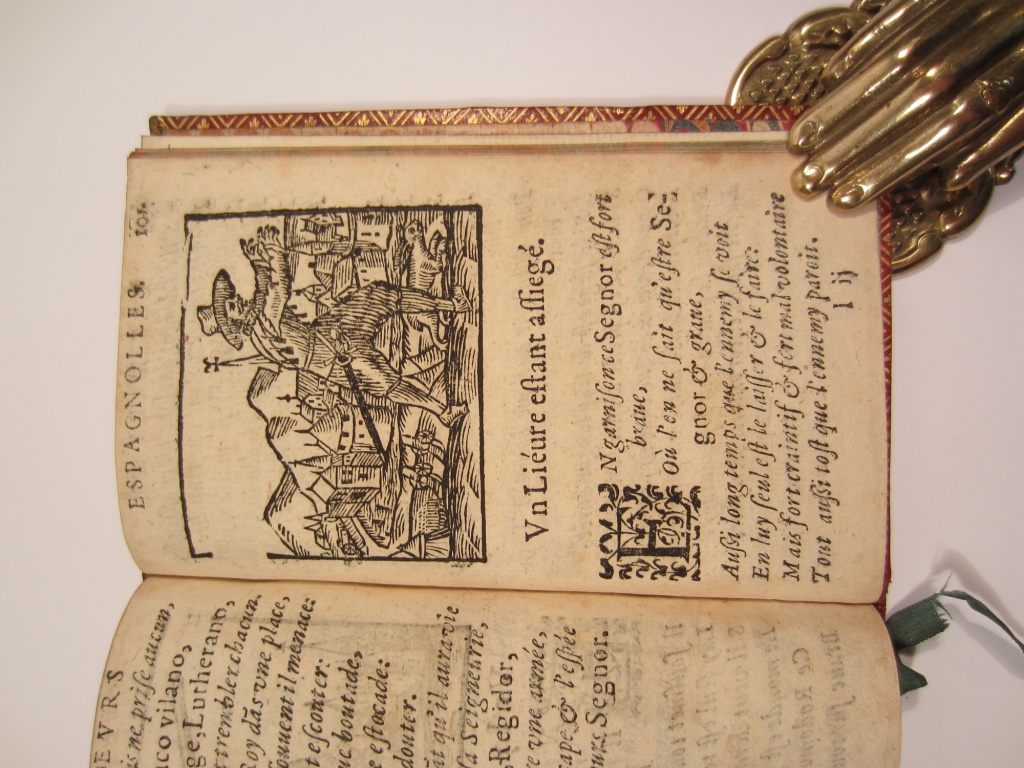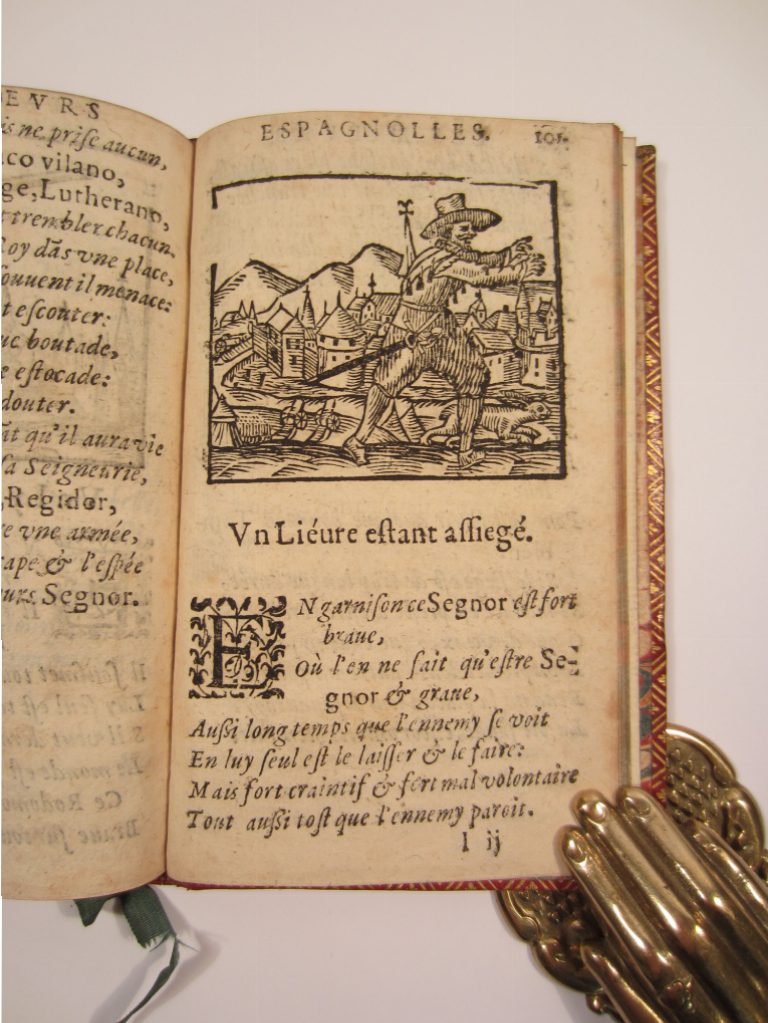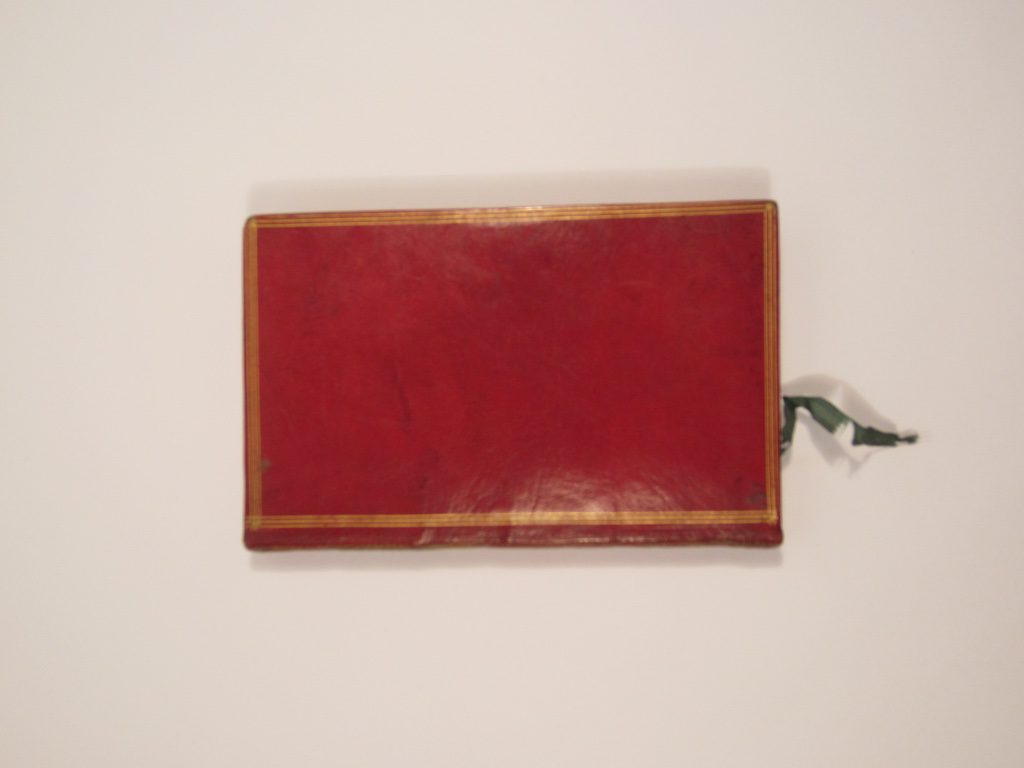[GAULTIER, Jacques]
Rodomontades Espagnolles. Colligées des commentaires des tres espouentables ... Capitaines, Matamares, Crocodille & Rojobroqueles, Fanfaron. Rodomuntadas Castellanas. ... Avec les figures representants les Mœurs des Espagnols
Rouen, Jacques Caillüé, 1650£6,500.00
12mo. pp. 118. Roman and Italic letter. Small floriated initials, typographical ornaments, sixteen half page woodcuts illustrating the second part, later 19th-century note tipped in at fly declaring ‘The picture drawn of the habits of a Spanish gentleman is not an attractive one’, engraved armorial book plate on pastedown. Title with small hole repaired, with partial loss of one letter, cut a little close in lower margin, trimming catch-letters on a few leaves, light age yellowing. A very good copy in beautiful early 18th-century french red morocco, covers bordered with a triple gilt rule, flat spine double gilt ruled in compartments, fleurons gilt at centres, green morocco title label lettered in gilt, edges gilt ruled, inner dentelles gilt, combed marble endpapers, all edges marbled and gilt.
A beautiful copy of this extraordinary, most rare and curious piece of popular literature, published during the wars of the Ligue in France, and with Spain. The title Rodomantade, (and subsequently the adjective in French), derives from the Italian Rodomantada, itself derived from the name of Rodomont the heroic and most boastful knight in the medieval Orlando epics, widely known from Ariosto’s ‘Orlando Furioso’. The name became associated, comically, with the wide discrepancy between the characters excessive and exaggerated boasting and the reality of his actions. The work was probably first published in this form in 1607, though without the ‘Figures representants les Mœurs des Espagnols’ and is attributed to the Jesuit Jacques Gaultier. Various editions quickly appeared in the early C17th century. It consists of 52 chapters, 47 in Spanish with their French translation opposite, the rest just in French, each of which contains the most extravagant and hilariously exaggerated boast, mostly professing extraordinary martial ability. One such boast states that in battle with the ‘Grand Turc’ he struck ‘Abenhamet’ such a blow that his head rolled all the way to Constantinople, whose people remained cowed in fear for over five years at the sight of such a feat. Other boasts include extraordinary prowess with women. One boast states that whilst playing football (jouant au ballon) he struck the ball with such force that it rose into the third heaven where the gods were left speechless before such a feat. The second part of the work, ‘Les Emblesmes et Moeurs des Espagnols’ is a description of the habits of the Spanish Gentleman in sixteen parts each illustrated with a woodcut. They are all satirical and describe the Spaniard as “ An angel at church, a devil at home, a wolf at the table, a pig in his room, a peacock in the street, a fox with women, a lion in the garrison but a hare once sieged etc each accompanied by an amusing poem on the subject. The text has been attributed to N. Baudouin by Losada Goya who refutes the attribution often given to the Jesuit Jacques Gaultier (1562-1636).
From the library of William Beckford (Hamilton Palace sale, 7 July 1883, lot 1423: ‘title mended, red morocco’) William Thomas Beckford, extraordinarily wealthy English novelist, art critic, travel writer and politician, now chiefly remembered as the author of the Gothic novel Vathek and builder of the remarkable Fonthill Abbey, the enormous gothic revival country house, largely destroyed. Beckford’s fame rests as much upon his eccentric extravagances as a builder and collector as upon his literary efforts. The opportunity to purchase the complete library of Edward Gibbon gave Beckford the basis for his own library, which was extensive, and dispersed over two years in 1883-4.
A rare work, beautifully preserved in fine red morocco.
In stock


